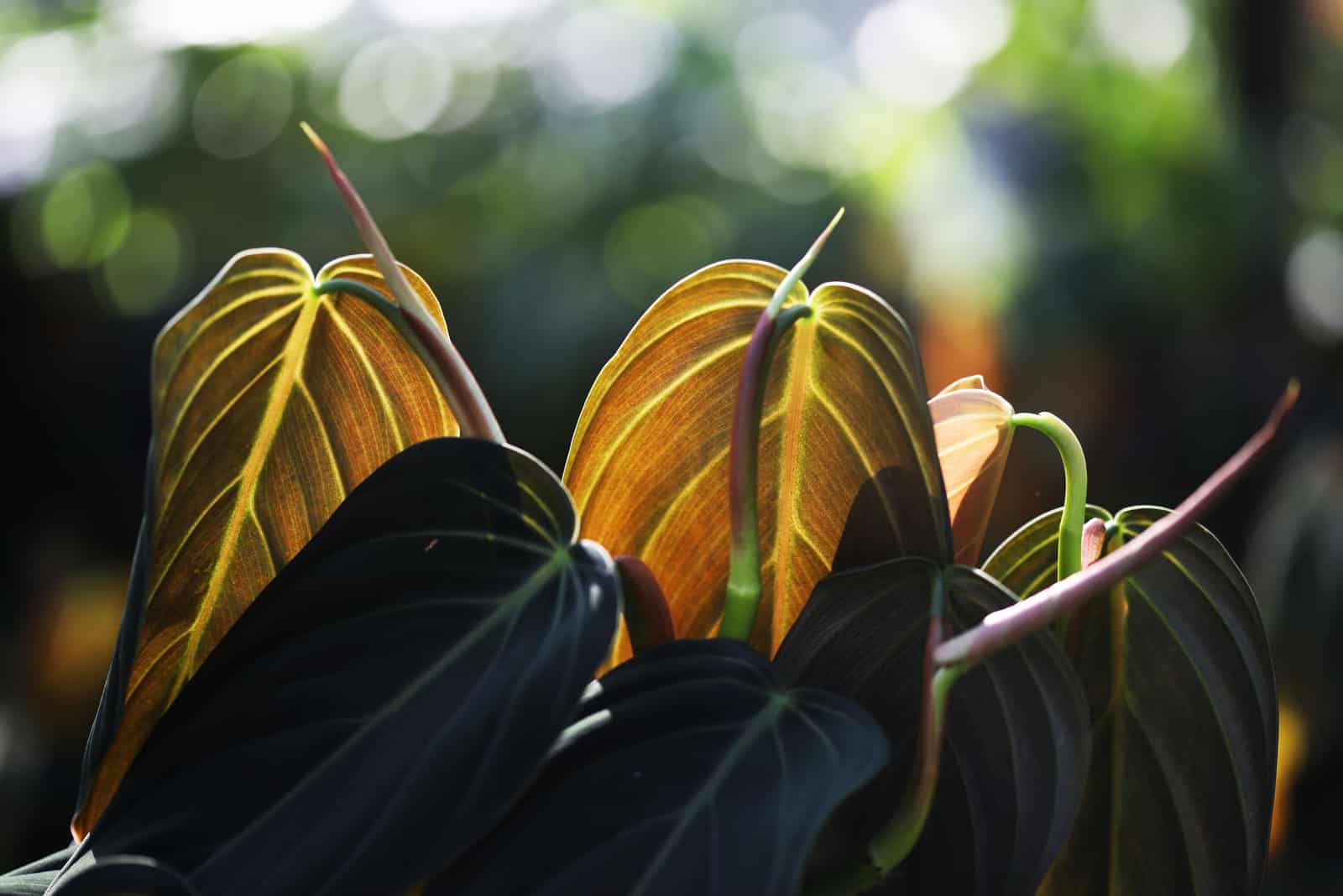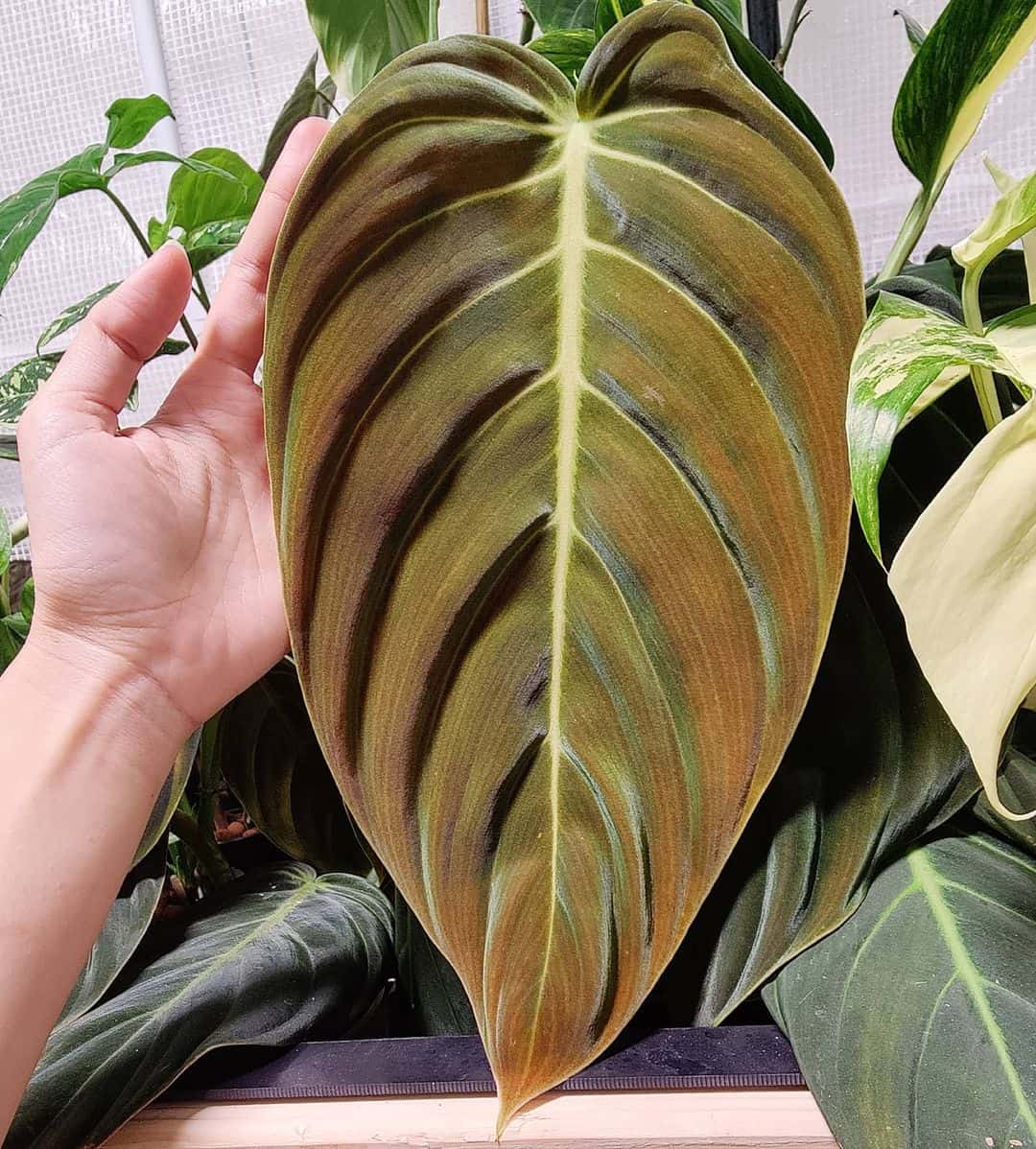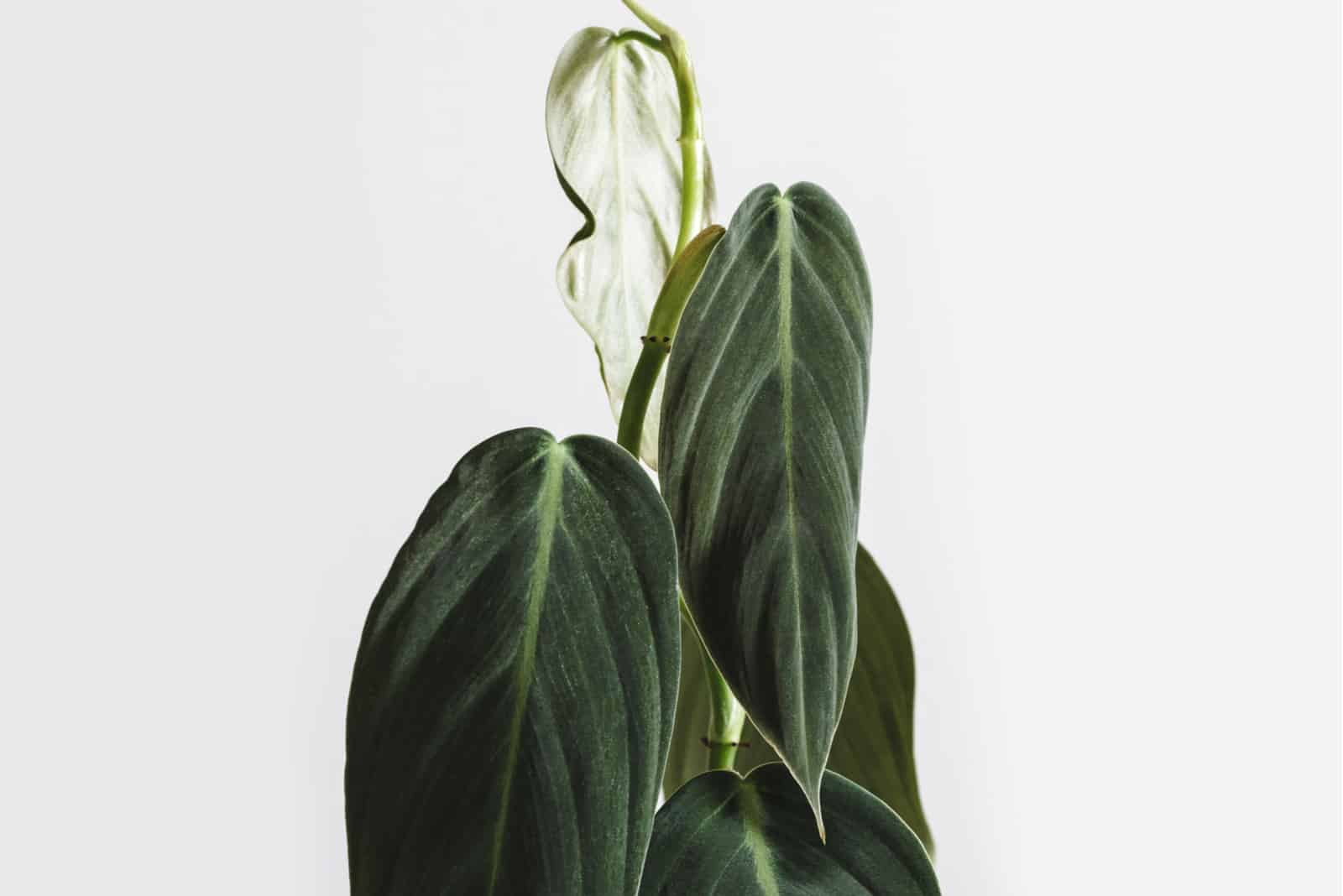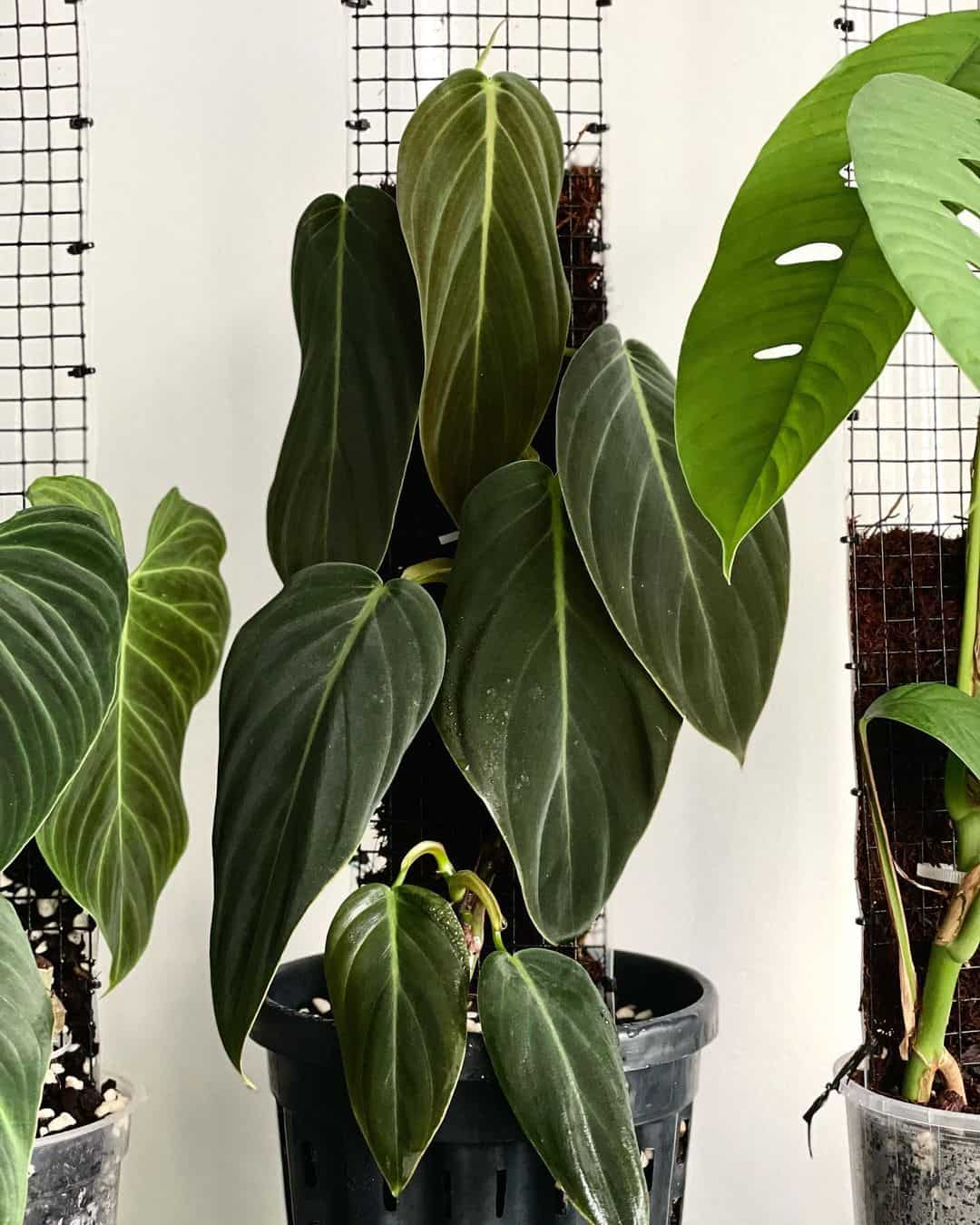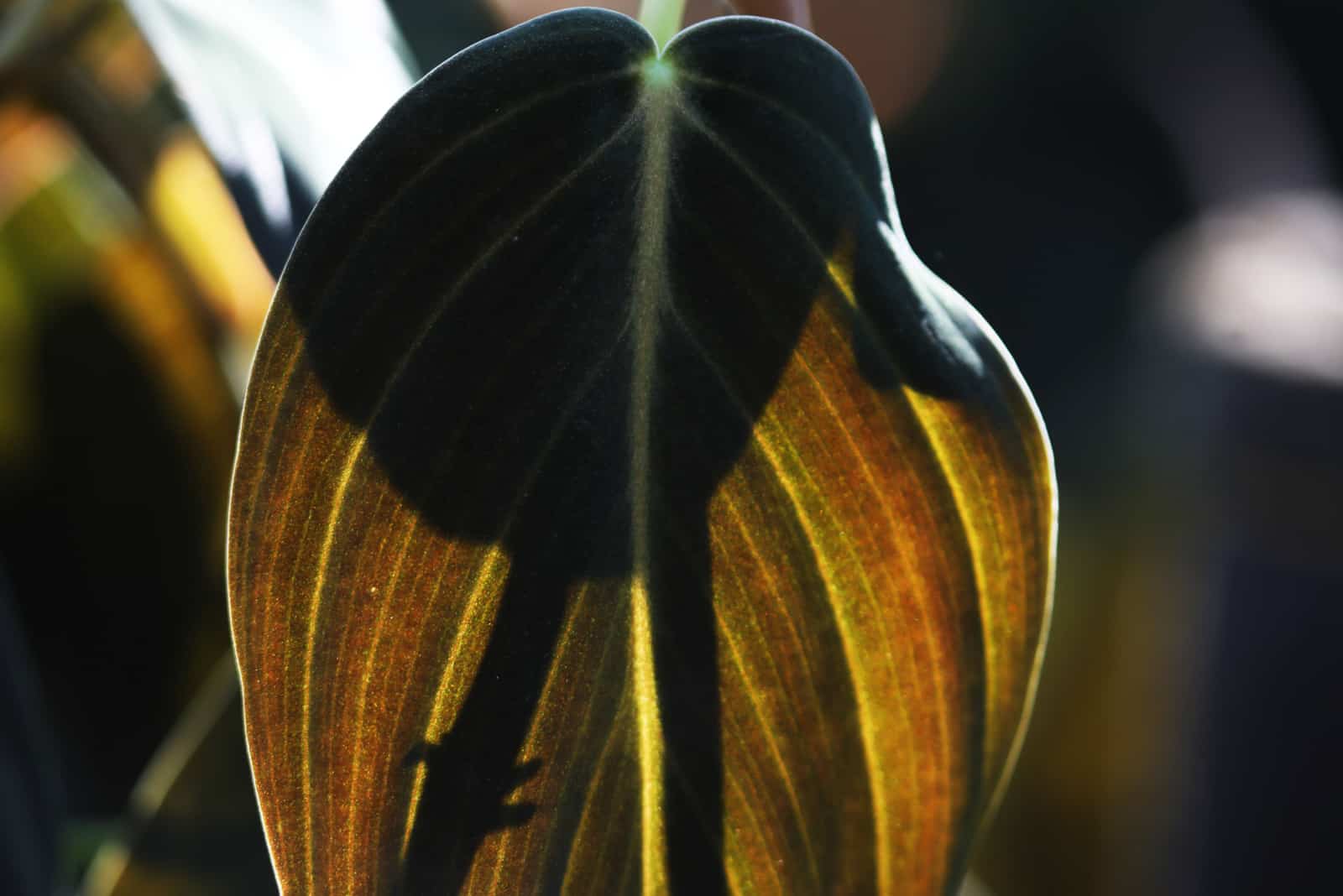Plant collectors around the world are falling in love with the Philodendron gigas. This rare plant can be difficult to find, but it is definitely worth the trouble!
Due to its gigantic leaves, this plant is often mistaken for the Philodendron melanochrysum, although there are distinctive features that distinguish them from one another.
Read on to discover more about the Philodendron gigas and how to take care of one of your own.
Philodendron Gigas Features
Photo from: @thehappyplace46
The Philodendron Gigas, a member of the Araceae family, is a tropical plant that can be grown as an outdoor or indoor plant.
The Philodendron Gigas was recently discovered by botanists in tropical regions of Panama in 1997. Ever since then, this plant has been on the most wanted lists of plant collectors.
You might be wondering why there is such high demand for this plant.
It is because this Philo plant grows beautiful velvet leaves with yellow spots and distinctive veins, is easy to take care of, and makes your living space more lively!
Instead of round, the petioles grow in a D shape.
This plant is also vining and climbing, so it gives you a lot of space to grow it however you want.
It’s important to remember that it can take years for your Philodendron Gigas to produce flowers when grown indoors.
If grown indoors, you must keep kids and pets away from this plant because it contains toxic calcium crystals.
If you manage to get your hands on this amazing plant, this plant care guide will help you keep it happy and healthy, so let’s take a look at how!
Growth and size
This gigantic plant can grow about 8-10 feet tall, and its velvety leaves can grow 3 feet in length.
It is a fast-grower, and it can triple in size in just one year!
The Philodendron Gigas is a climber as well, so your plant is going to need a climbing pole or some other support if you are growing it in a pot.
However, this plant is often grown in a hanging basket and used for decorating indoor spaces due to its magnificent, triangular, and elongated olive green leaves which come in different shades of green.
Where is the Philodendron gigas from?
This plant was originally found in Panama, where it has now been declared as an endemic species. It has become quite popular among plant enthusiasts, however, it is very rare.
Philodendron Gigas Plant Care
This delicate houseplant does not require a lot of time and care to make it happy. Our Philodendron plant care guide will tell you everything you need to know.
Light
The best way to take care of this plant is by mimicking its natural environment. As it naturally grows in tropical forests, you should be aware of the large trees and jungle out there!
This plant is accustomed to growing in partial shade.
When grown outdoors, you should keep it away from direct sun as it can damage the plant and its gorgeous leaves. Plant it somewhere under a tree, where it can grow in shade and indirect sunlight.
As a houseplant, it prefers bright light conditions, so you should keep it near a window that doesn’t get direct sunlight.
Avoid low light areas, as its leaves might not grow and reach their full size, resulting in the overall plant looking lanky.
Temperature
The best temperature for your Philodendron gigas would be between 18 and 27 degrees Celsius. Anything above would be too hot for the plant to handle.
Any temperature below 18°C would damage the plant as it cannot tolerate frost or cold, both of which might cause the plant to stop growing.
So, if you live in a cold area, I would suggest keeping your plant indoors. However, avoid putting your plant near a radiator or an air conditioner, because it might get too hot.
Soil
This rare aroid plant prefers loose and well-draining soil rich in nutrients.
The best potting mix would consist of perlite, orchid bark, sphagnum moss, and universal potting mix. You can basically mix equal parts of these ingredients and your plant will love it!
This mixture will keep the soil moist, but not so much that it becomes compacted.
Fertilizers
Another way to keep your plant healthy is by providing it with nutrient-rich fertilizers.
You should apply fertilizers once a week if your plant is growing, or once a month during spring and summer if your plant is mature. You can skip fertilizing your plant during the winter.
The recommended fertilizer is a balanced, liquid fertilizer diluted in water to prevent chemical build up and damage.
Watering
The Philodendron gigas prefers moderate soil – not too dry or too wet. The soil should be dry before watering again so as to avoid excess water and soggy soil.
Don’t leave the soil dry for too long though!
Dry soil can lead to stunted growth and your giant not becoming that big.
The watering schedule mainly depends on temperature conditions. If the temperature is higher, then the plant will become dry sooner, and you might have to water it more frequently.
During the winter season, the water requirements of your plant are brought to a bare minimum. This is because it evaporates slowly during winter, and your soil requires a longer time to dry.
The best idea would be to keep optimum conditions indoors, as without temperature fluctuations watering needs will stay the same.
Before watering, check if the soil has completely dried by using your thumb or a wooden stick.
Humidity
Photo from: @growrootsgrow
Being a tropical plant, Philodendron gigas is used to higher humidity levels.
It is recommended to keep humidity levels around 60% to promote healthy growth of the plant and leaves.
When this plant is grown indoors, providing enough humidity can be tricky. You shouldn’t worry too much though, as long your plant gets enough water it can adapt to lower humidity levels.
However, if you want to keep this rare plant happy and satisfied, then you should invest in a good humidifier. Alternatively, put your gigas near other houseplants, such as Philo burle marx, or any other plant species.
Pruning
The Philodendron gigas is a fast-growing plant, and so needs to be pruned regularly.
If you want to keep your plant looking neat after it has already grown very tall, you can cut the top off and use it for propagation.
Any leaves that have turned yellow or brown can also be trimmed, or you can wait for them to fall off by themselves.
To promote flowering, remove any flowers looking pale and dry.
It is recommended to regularly clean the leaves of your philodendron because dust can fall on them and clog the pores, which are necessary for photosynthesis.
It is better to regularly prune rather than do heavy pruning once a season.
Repotting
Because this plant can triple its size in only one year, repotting is a must.
However, you do not have to worry about harming your plant while repotting because this plant has a very healthy and fixed root system.
You will have to repot your plant once you see the roots coming out of the pot. If this is the case, then you should repot in a larger pot with a pre-prepared potting mix.
If you just want to change the soil, simply take out the old soil and put a new potting mix into the same pot.
Do not use pots that are too big as they can disrupt the draining of the soil and lead to root rot.
It is recommended to repot your plant during spring or early summer so it can adjust to its new environment during the growing season.
Propagation
Photo from: @tanahxdaun
This aroid plant is usually propagated by taking stem cuttings from a healthy and mature plant. The cutting should be done just a few inches below the leaf node with sterilized cutting equipment.
The cutting should have a couple of leaves. If there are any leaves on the lower region, you should remove them and put the cutting in water or moisturized potting soil.
You can apply diluted rooting hormone to promote root growth, however this is only optional because your new plant will most likely grow a root system on its own.
If you have placed the cutting in water, roots should appear soon. Make sure to change the water frequently.
When it comes to soil, you can mostly use sphagnum moss as a base. However, it would be best to transfer the established plant to a larger pot with potting soil mixture in it.
Here is how you can repot and propagate your Philodendron Gigas:
Common Problems
Every living creature deals with certain problems, and your Philodendron gigas is no different.
Be aware of these problems and try to avoid them as much as possible! It would be such a shame to lose this rare plant, especially as it is an endemic species.
Watering issues
Overwatering is a common issue when it comes to growing and taking care of houseplants.
As we previously mentioned, your Philodendron gigas does not enjoy having its soil either too dry or too wet.
If the leaves of your plant have started to change color to yellow, then you might be overwatering it.
However, if the leaves start turning to a brown color, it is usually an indicator of underwatering.
Both of these issues lead to root rot, and eventually the death of your Philodendron gigas.
You should always check if the soil has dried before watering it again, but never leave it dry for too long!
Drooping
Your plant will droop if you don’t provide it the support it needs.
If you have a climber houseplant, it is necessary to provide it with a climbing pole or a totem that can help it climb and grow bigger!
Another reason might be underwatering, so pay attention to your watering habits.
Pests
The Philodendron gigas is unfortunately prone to pests such as scales or aphids.
These pests attack the leaves and flowers of your precious plant, and you should get rid of them as soon as possible!
If you notice any prominent yellow spots on its leaves, it could be an indicator of aphids. You could spray neem or mineral oil mixed with water and soap on the plant to get rid of them.
If you are dealing with scales, then you should use a cloth and wipe them off because they have an exterior shell which makes them resistant to sprays.
Conclusion
If you managed to get your hands on one of these plants, then you are very lucky indeed! Seriously, I’ve been trying to add a Philodendron gigas to my plant collection for years.
Its huge, velvety leaves and climbing ability will definitely bring a bit of tropical spirit into your home.
Provide it with enough space, bright light, well-drained soil, and moderate temperature to grow and develop, and it will be thriving in no time.
Pay attention to your watering habits; you should avoid overwatering or underwatering because this can destroy the roots and negatively affect the overall health of your plant.
Remember to checkout if there are any insects and pests invading your plant. The Philodendron gigas should definitely be kept pest-free!
Until next time!
Like this post? Share or pin it for later!

